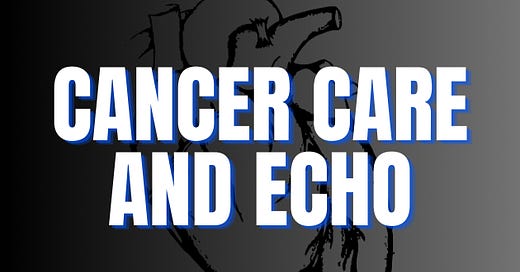Cancer Care: Why Echo Matters
You might not immediately think of the heart when treating cancer—but it doesn’t always stay quiet. As chemotherapy evolves, so does our responsibility to catch early signs of cardiac injury. From initial staging scans to post-treatment follow-ups, your echo images and measurements can directly influence whether therapy continues, pauses, or takes a new direction. This article offers a clear, practical guide to monitoring cardiac function in patients receiving potentially cardiotoxic cancer treatments—especially anthracyclines and HER2-targeted agents. You’ll learn the key echocardiographic parameters, red flags to watch for, and how to align your studies with ASE and cardio-oncology best practices—so you can help identify damage before it becomes irreversible.
What Is Chemotherapy-Related Cardiac Dysfunction (CTRCD)?
CTRCD is most commonly defined as a drop in left ventricular ejection fraction (LVEF) of more than 10% to a value below the normal range. Depending on the guideline used:
ASE (2014): LVEF drop >10% to a value <53%
ESC (2022): LVEF drop >10% to a value <50%
Even before the ejection fraction drops, subtle dysfunction can show up in the form of impaired strain. A relative reduction in global longitudinal strain (GLS) of >15% from baseline, even when LVEF is still normal, is also considered an early sign of subclinical dysfunction.
Worried about your echo boards? Build confidence with practice quizzes, clear explanations, and study-anywhere design.




